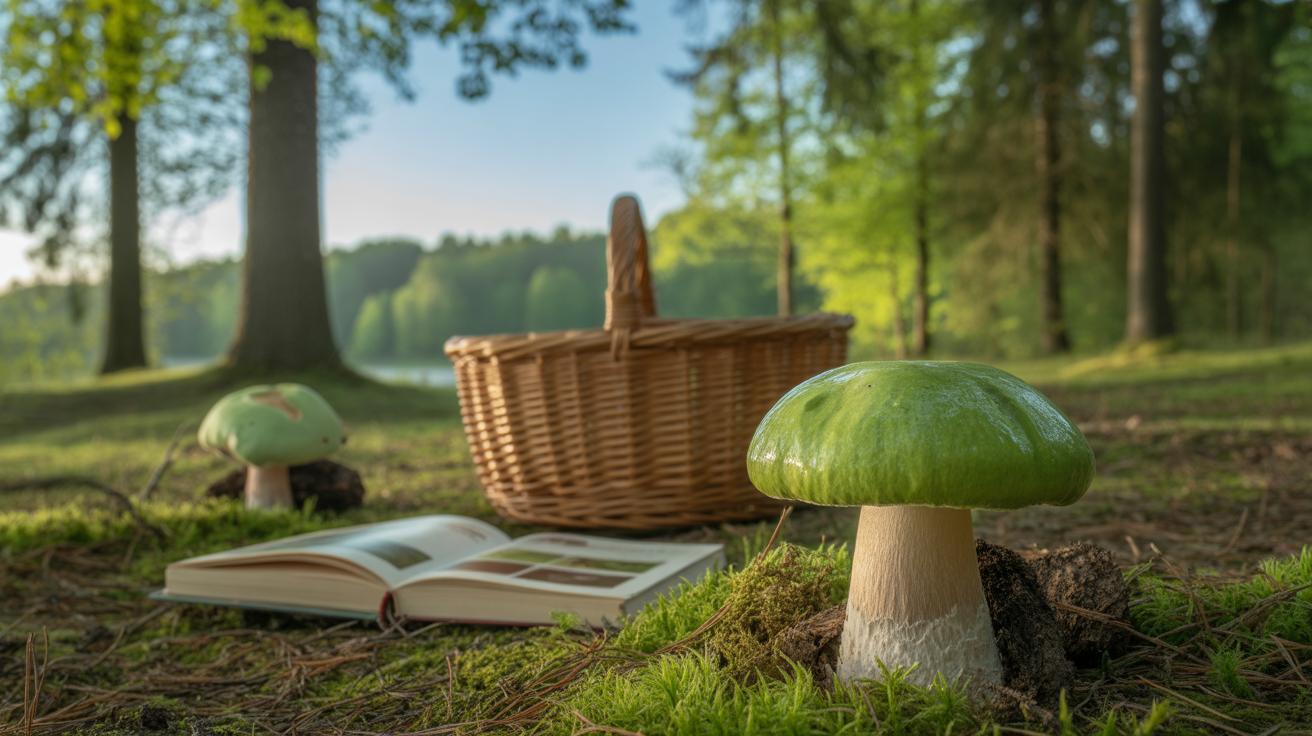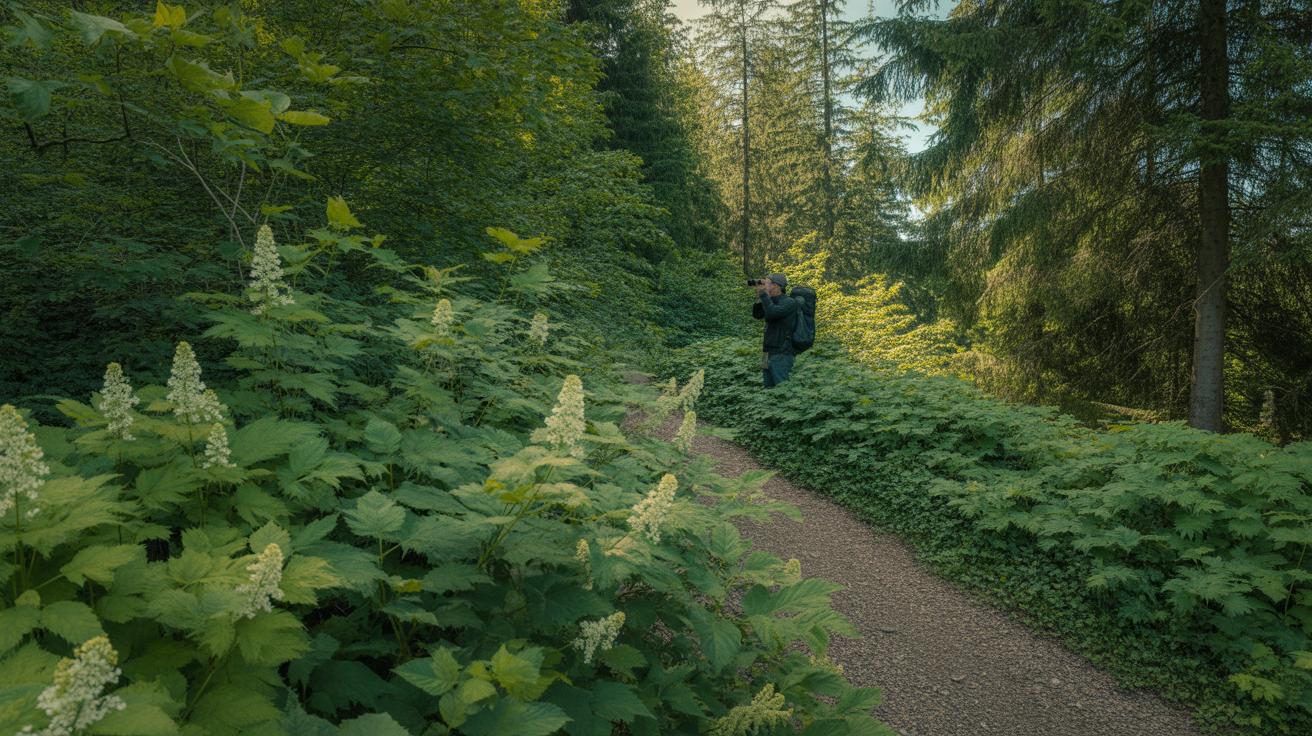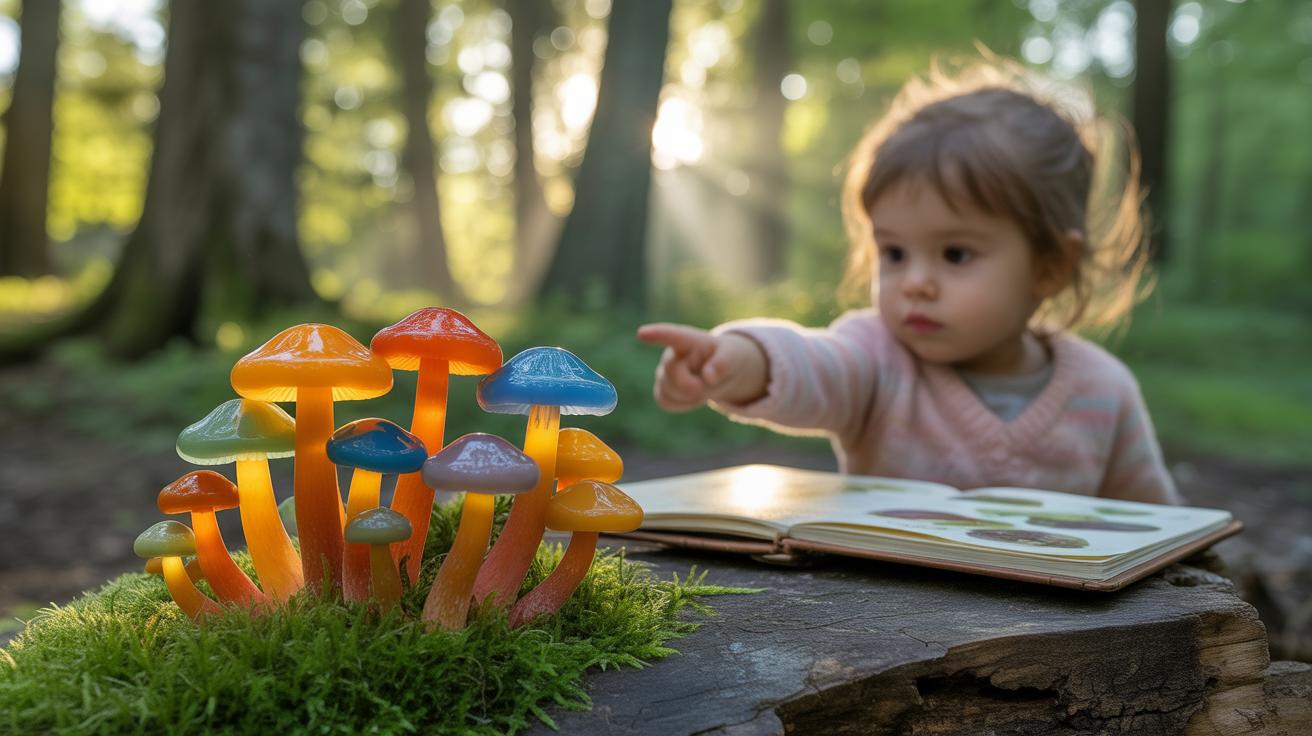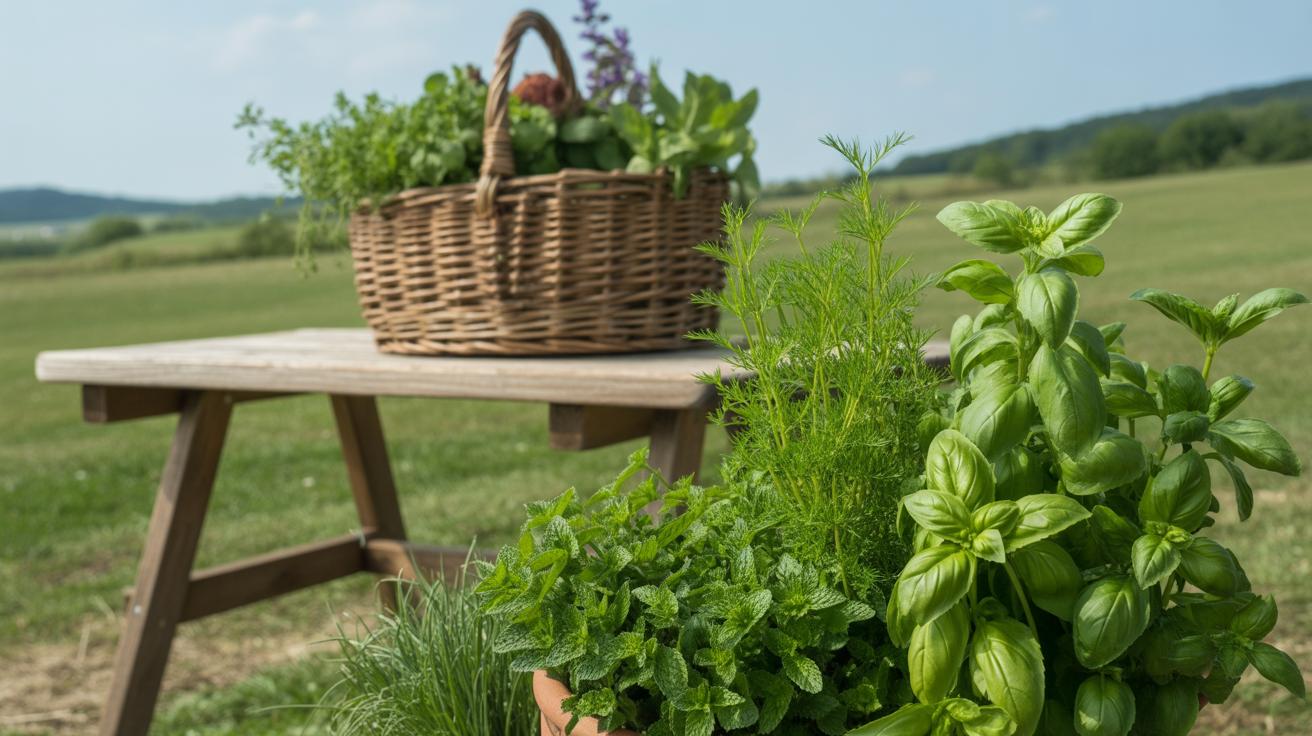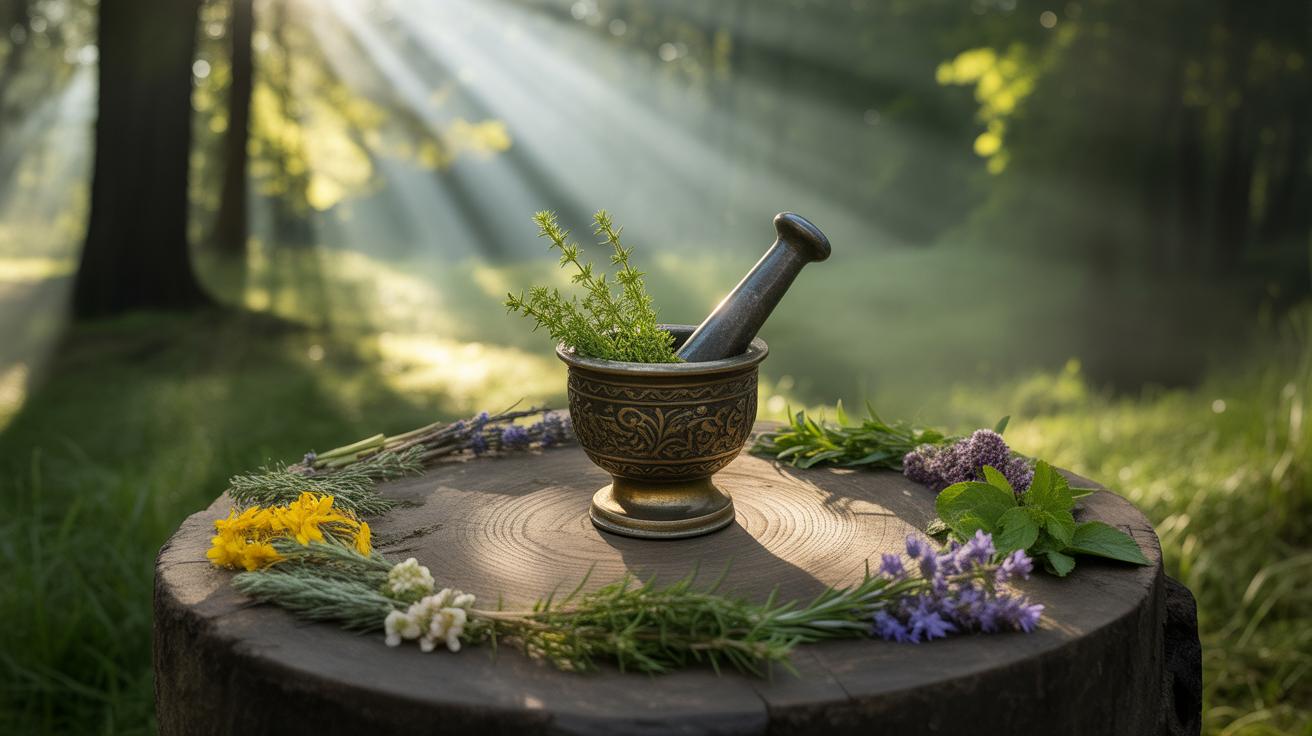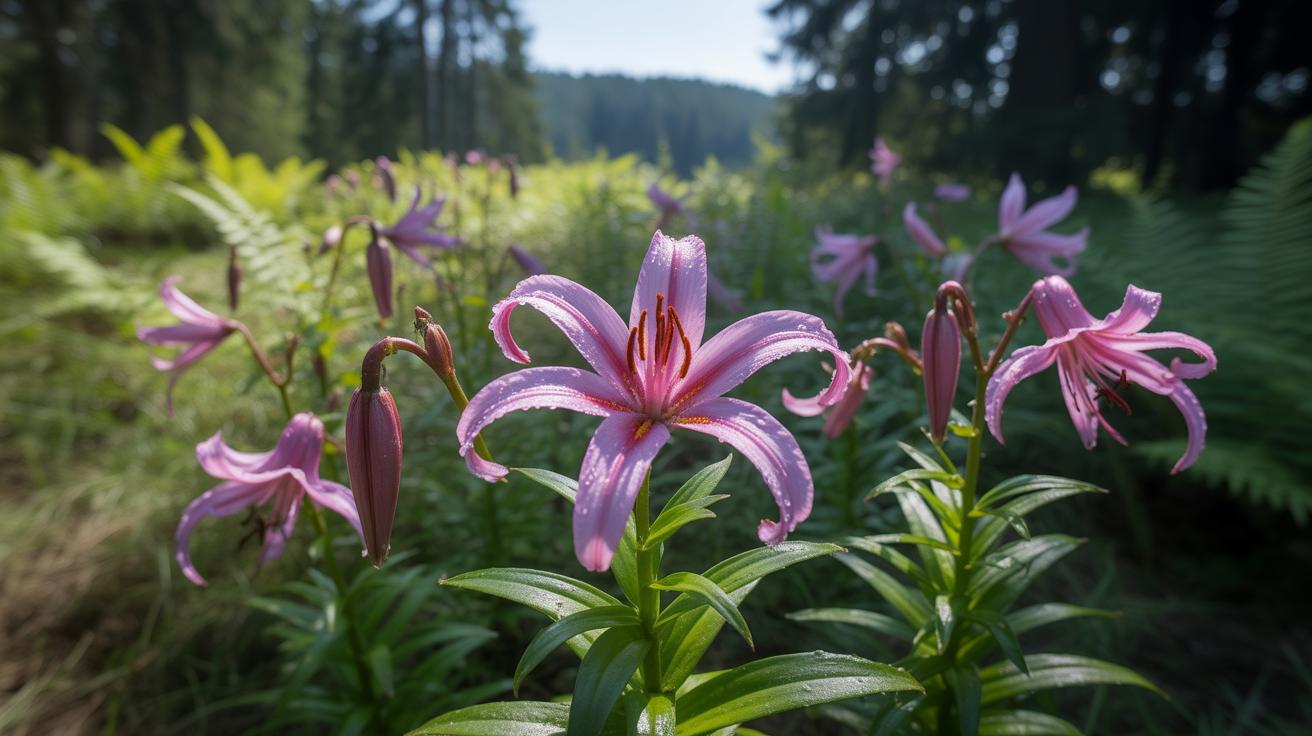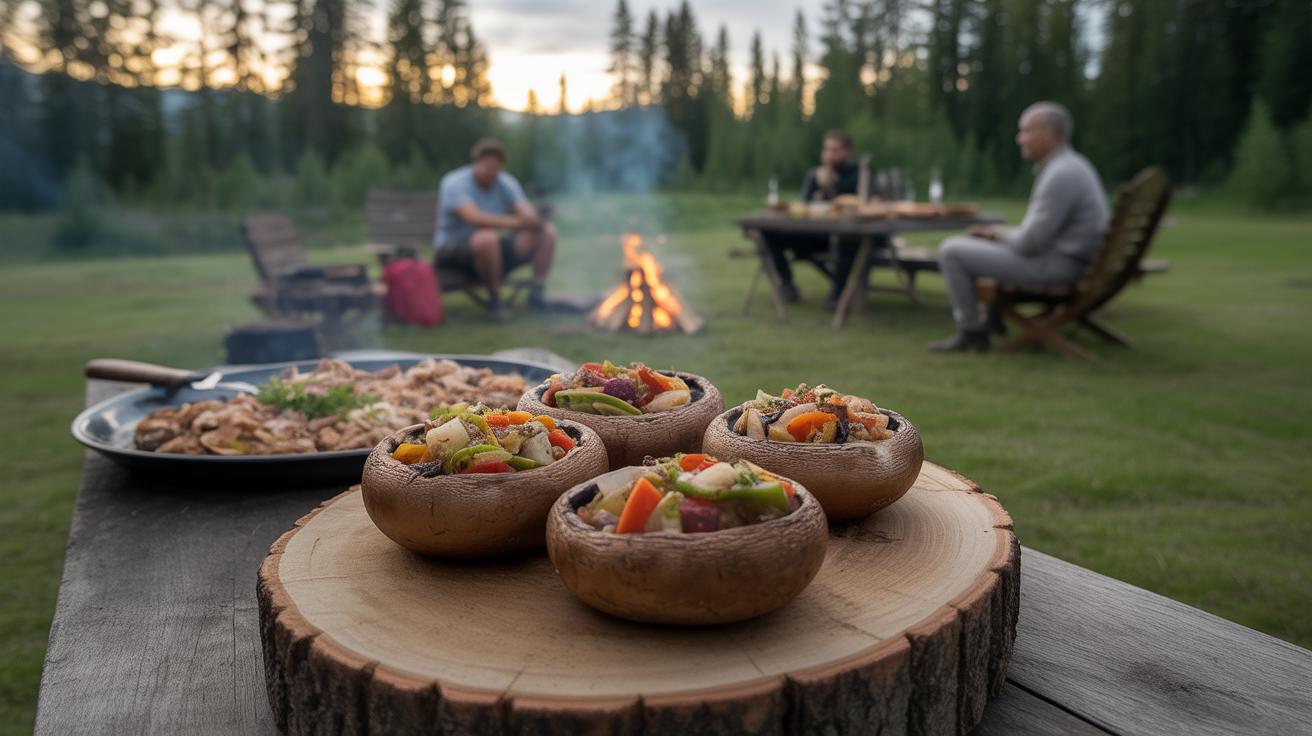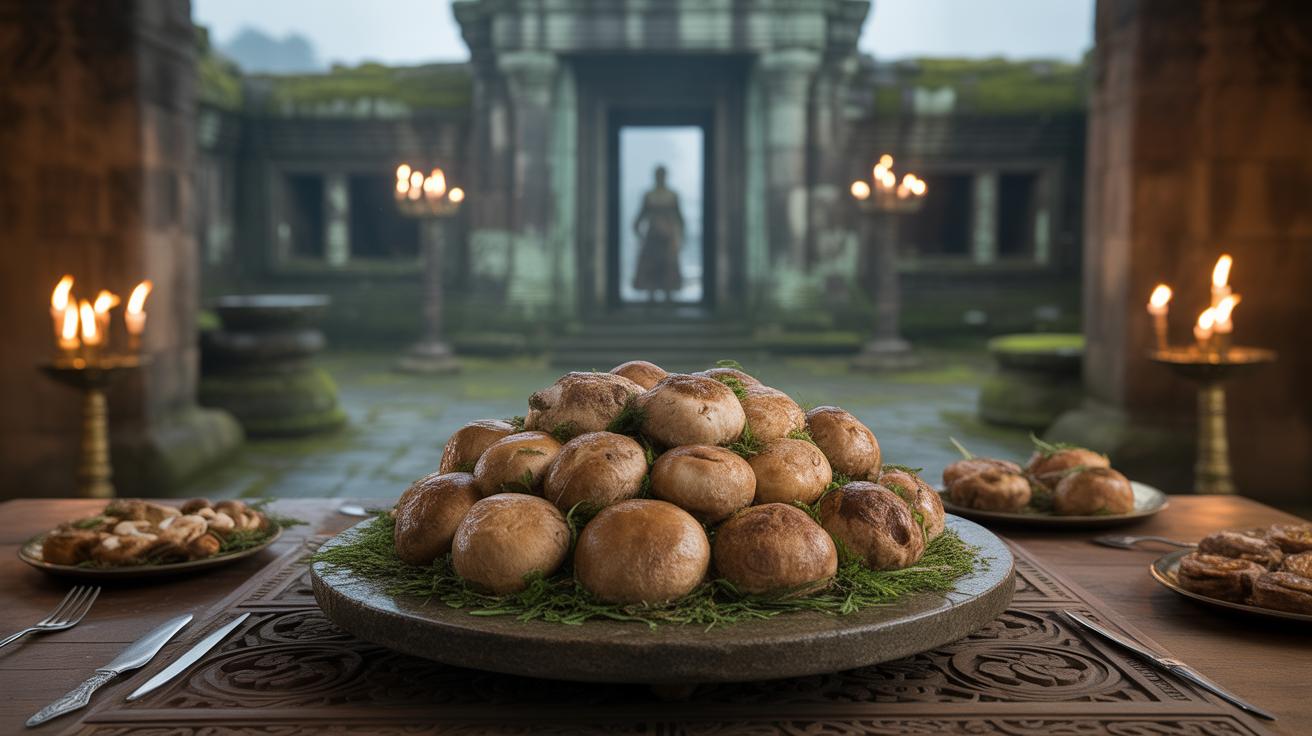Introduction
Identifying edible and toxic green cap varieties outdoors is crucial for any mushroom forager. Many green-cap mushrooms closely resemble each other but can range from safe to eat to deadly poisonous. Knowing how to tell the difference helps you enjoy wild mushrooms safely.
This article covers key features of green cap mushrooms you will find outdoors. It explores the traits of edible types and contrasts them with toxic varieties. By the end, you will have practical knowledge to pick green cap mushrooms without risking your health.
Understanding Green Cap Mushroom Basics
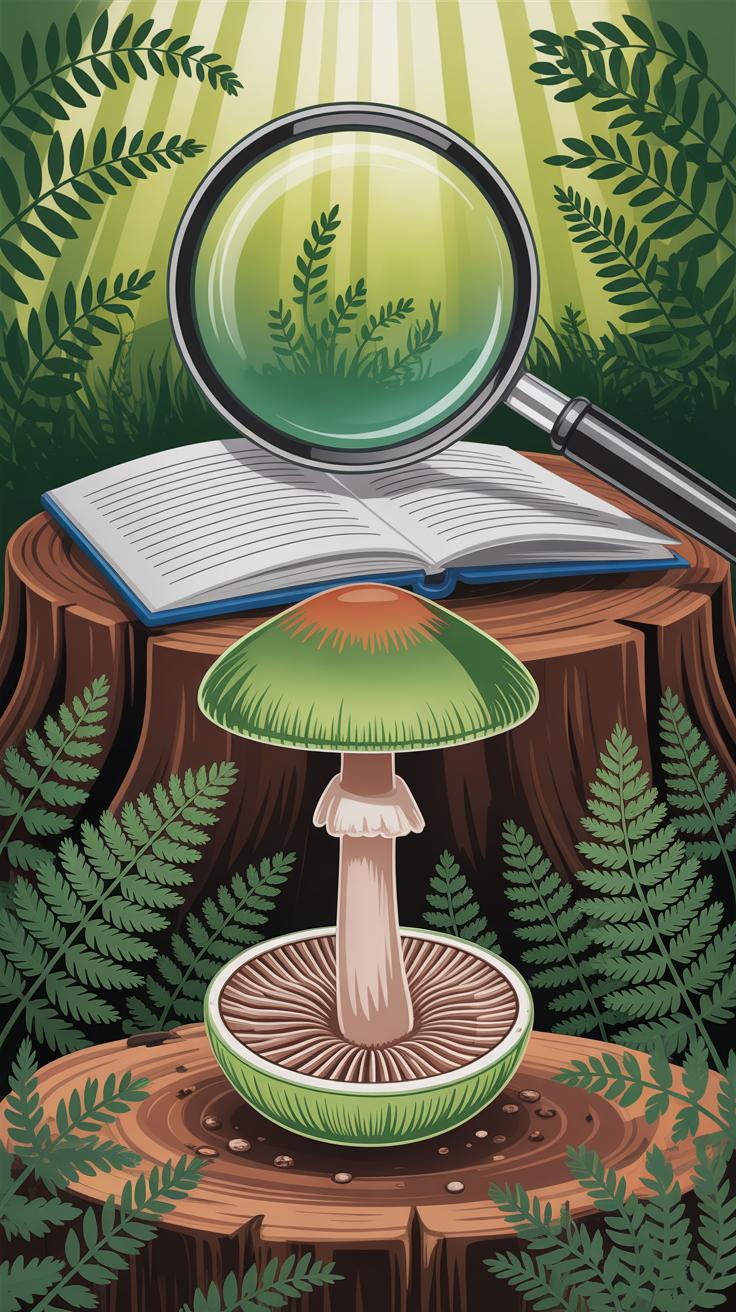
What Makes a Mushroom a Green Cap
You might wonder what exactly sets green cap mushrooms apart from others. The name says a lot but isn’t always straightforward. Generally, green cap mushrooms feature a cap that shows some shade of green, but that green can range from pale olive to deep, almost blueish-green. Sometimes it fades or blends with brown, yellow, or gray hues.
The shapes tend to be fairly typical: rounded or slightly convex caps when young, flattening with age. The cap surface might be smooth or slightly sticky when wet. Also, the edges may roll inward when the mushroom is immature, then open out slowly. Size varies quite a bit—from small, dainty specimens to caps several inches wide.
You’ll often notice the gills beneath the cap, which can be tightly or loosely spaced, usually cream to white, but occasionally showing a hint of greenish tint. The stem is typically solid and sturdy, lacking a bulbous base most times, though there are exceptions.
Where Green Cap Mushrooms Grow
Finding green cap mushrooms outdoors involves knowing where they thrive. Most prefer damp, shaded spots—think mixed forests with deciduous trees, often near oaks or beeches. I’ve found them under thick leaf litter or moss where moisture lingers.
Sometimes they pop up alongside grassy clearings or on the edges of trails, but rarely in open fields. Soil type can matter too; slightly acidic to neutral soils seem favored, though you might see them on rotting wood or mossy logs as well.
The season matters as well. Green cap mushrooms often emerge in the cooler parts of spring or fall when humidity stays high. If you forage during dry, hot summers, you might be out of luck.
So, when you’re out hunting for green caps, focus on damp woods, leaf-strewn ground, and cooler, moister conditions. Look closely—and you might spot that green hint before you even get close.
Common Edible Green Cap Mushrooms
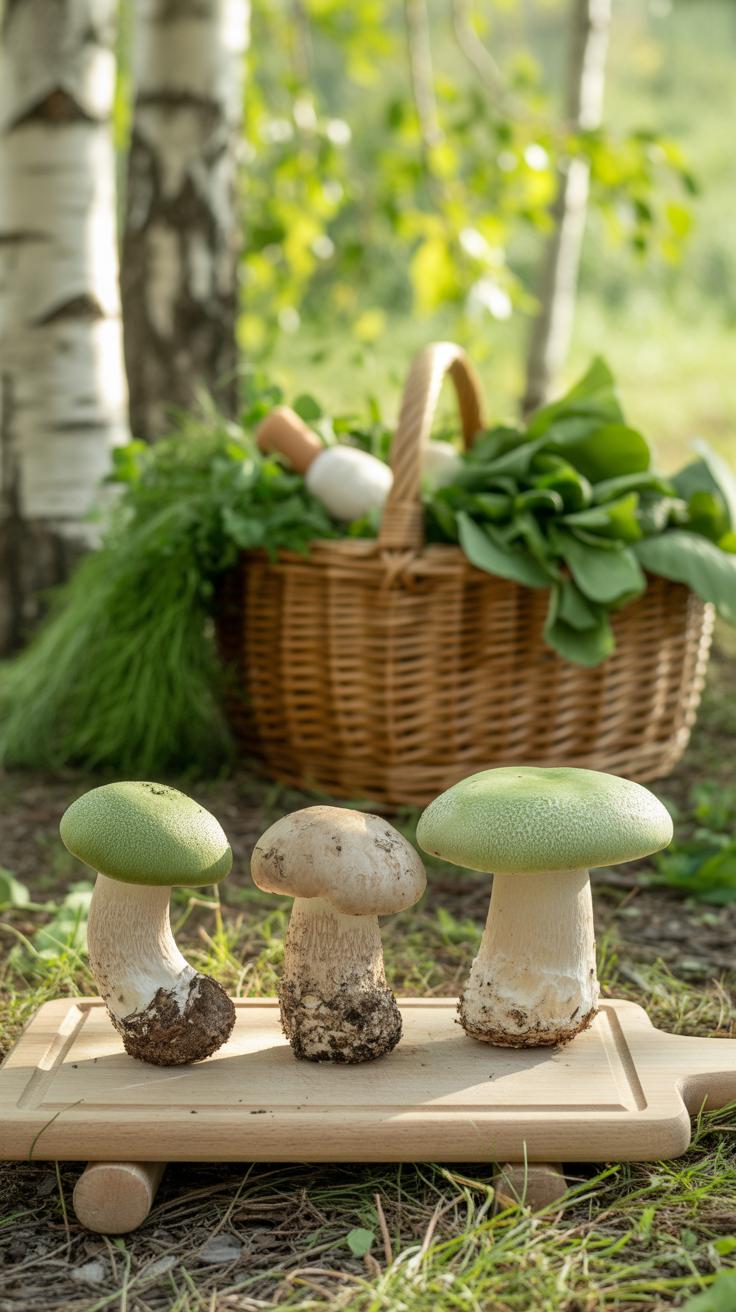
When you’re out foraging, spotting a green-capped mushroom can feel like a small victory. But which ones are actually safe to gather? Some varieties stand out as reliable edibles if you know what to look for. A few popular green cap mushrooms include the Shaggy Parasol (Chlorophyllum olivieri), the Green Russula (Russula virescens), and the Green-gilled Lepiota (Leucoagaricus naucinus). Each has distinct traits, but they share some common features that help with identification.
Visually, edible green caps often exhibit a fresh, even coloring without bruising or streaks. Their caps might be smooth or slightly scaly. Scent can be a subtle but useful clue too—mild or slightly nutty scents are common, unlike strong chemical or sour odors that often hint danger. Some edible green caps show a white or pale gill beneath, which you should check carefully.
Take the Green Russula, for instance. Its brittle stem and cracked cap texture differentiate it from toxic look-alikes. The Shaggy Parasol, on the other hand, carries a more prominent ring on the stem and a smoother cap. Knowing these little details can make a big difference. Still, hesitation is natural—you might want to confirm multiple features before you decide you’re holding an edible green cap in your hand.
Dangerous Green Cap Mushrooms to Avoid
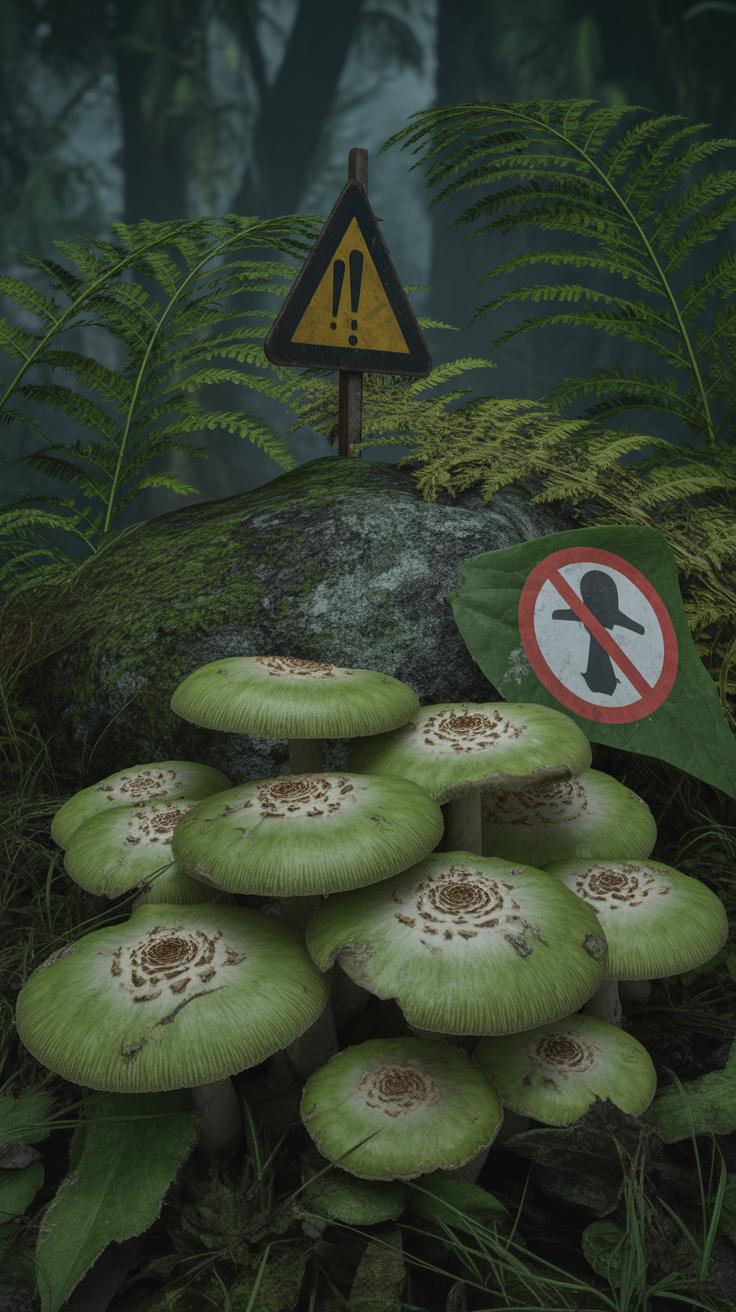
Identifying Toxic Green Caps
When foraging, you must learn to recognize the toxic green cap mushrooms that lurk outdoors. The most notorious is the death cap (Amanita phalloides), which can easily be mistaken for some edible types because of its greenish cap. Usually, the cap looks smooth and slightly shiny, with a pale to olive-green color. Sometimes it shows a yellow tint or even brownish areas, which can confuse foragers.
Look carefully for these physical signs:
- A volva or cup-like structure at the base of the stem, often hidden underground.
- White gills beneath the cap that don’t turn color when bruised.
- A white, slender stem, sometimes with a faint ring or skirt near the top.
- A slight unpleasant or “chemically” smell—though this can be subtle.
It’s tempting to rely on cap color alone, but green shades vary a lot. So don’t just trust the cap—examine the stem and base. The death cap’s volva is a key trait, but it can be buried, making ID tricky.
Health Risks of Toxic Green Caps
Eating toxic green cap mushrooms like the death cap carries severe, sometimes fatal consequences. Symptoms often start quietly. People might feel nausea, vomiting, stomach cramps, and diarrhea within 6 to 12 hours. This delay is dangerous—it lulls you into a false sense of security.
Then liver and kidney failure can develop rapidly. At this point, emergency care and possibly a transplant might be needed. It’s a grim situation because no simple antidote exists. Even a small bite can cause poisoning.
From my experience talking to foragers, many underestimate how lethal these green caps are. Some got sick thinking they had found a safe edible mushroom. It’s worth asking yourself: is it really worth the risk? If you hesitate in identifying a green cap, it’s safer not to pick it.
Key Differences Between Edible and Toxic Green Caps
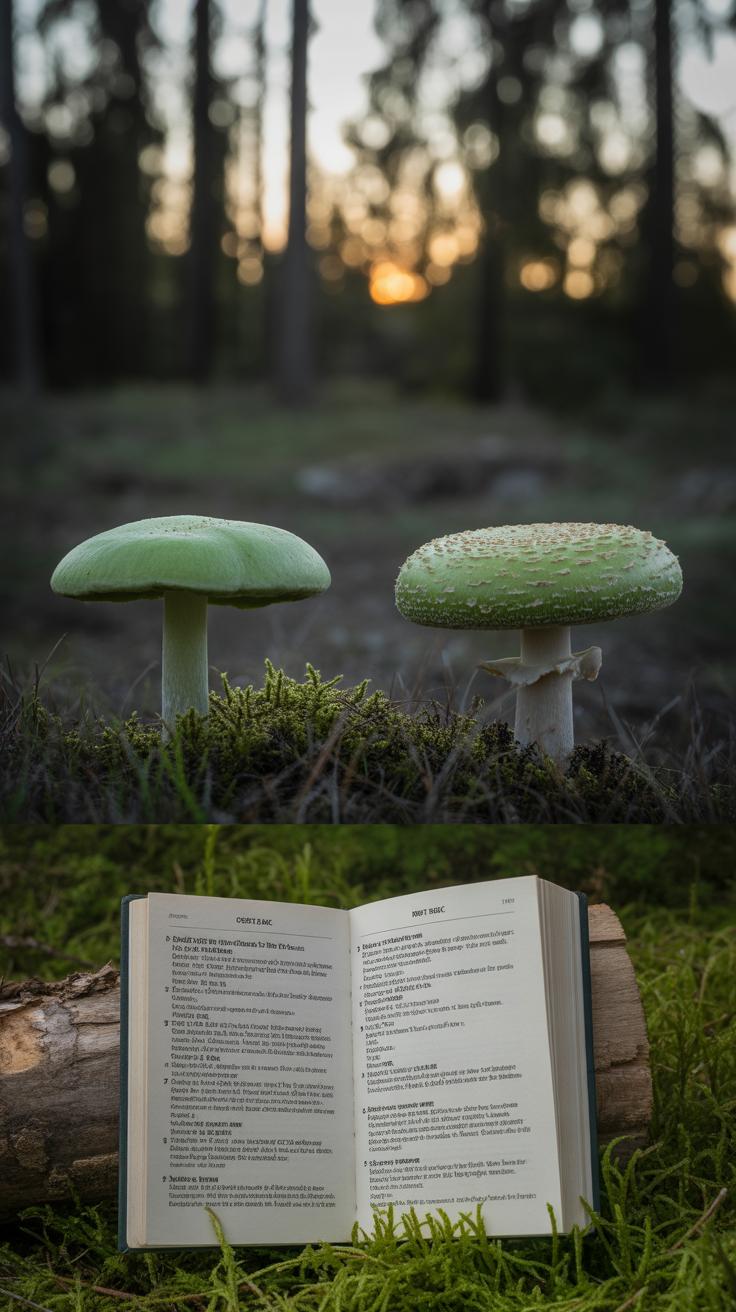
Spotting edible green cap mushrooms isn’t always straightforward, especially when their toxic counterparts can look deceptively similar. When you’re out foraging, paying close attention beyond just the basic shape is crucial.
Visual Contrast Points
Color can be a helpful clue but don’t rely on it alone. Edible green caps often have a more consistent, even green shade, sometimes leaning toward olive. Toxic ones may show blotchy or uneven green patches, sometimes mixed with yellowish or bluish tones that seem off.
Look closely at the gills. Edible varieties typically have gills that are spaced relatively evenly and often lighter in color—pale green or white. Toxic green caps sometimes have denser, darker gills, almost grayish or even tinged with brown. That texture difference can be subtle but quite telling.
The cap texture also varies. Edible green caps often feel smooth or slightly moist but never slimy. Toxic ones might have a greasy or sticky surface, maybe even a faintly scaly feel, which you might not expect if you’re not handling them carefully.
Smell and Texture Differences
Smelling mushrooms is risky, yes, but sometimes you get a quick whiff as you pick—trust your instincts. Edible green caps generally give off a mild, earthy aroma, sometimes a hint of sweetness. Toxic types might smell sharper, almost chemical-like or sour, which can catch you off guard.
Texture under the fingers can reveal more than you’d think. Edibles usually feel firm, resilient but not tough. Toxic green caps can be oddly soft or mushy—even slightly slimy—if you press gently. That wetness is often a subtle warning.
Have you ever picked a mushroom expecting one thing, then felt uneasy because something seemed “off”? That’s often these little sensory details talking. Learning to notice them can make a real difference in figuring out what’s safe.
Safe Foraging Practices for Green Cap Mushrooms
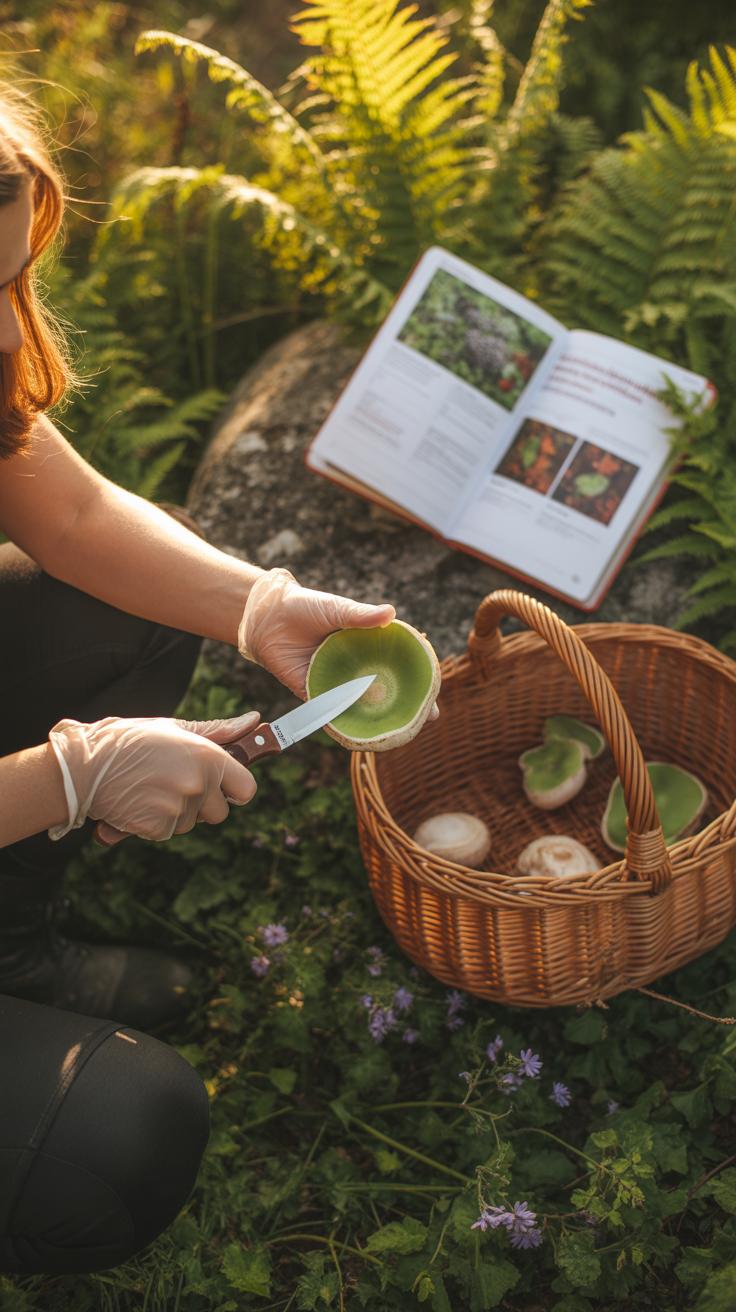
When heading out to forage green cap mushrooms, preparation goes beyond just a keen eye. First, bring along a sturdy knife for clean cuts—breaking the mushroom can damage the gills, making ID harder later. A small basket or breathable bag is better than plastic, which can trap moisture and cause your finds to rot or spoil quickly. Gloves can help, not necessarily because green caps are always toxic, but just to avoid skin irritation or transferring spores accidentally.
Before you even start, spend some time reviewing field guides or apps specific to your area. Get familiar with the mushroom’s habitat, growth patterns, and subtle markers; this groundwork saves you from mistakes that feel obvious once you recognize them. Still, don’t rely solely on one source—cross-check multiple references to catch discrepancies.
Once you collect a green cap, double-check your identification in the field if possible. Look for key traits like cap shape and color alongside gill attachment and smell. It helps to snap a few photos to study later or to share with a mushroom identification group online. If you’re uncertain, leave the mushroom behind. Some foragers I know keep a small notebook to jot down locations and notes about the specimens they find—it’s a good habit, especially when learning.
And don’t hesitate to ask an expert. Many regions have mycological societies or local groups happy to help beginners. Sometimes, even experienced foragers miss tricky details. Trusting someone else’s keen eye might be what avoids a risky mistake. After all, safe foraging means knowing when to pick and when to wait or pass.
What to Do If You Suspect Mushroom Poisoning
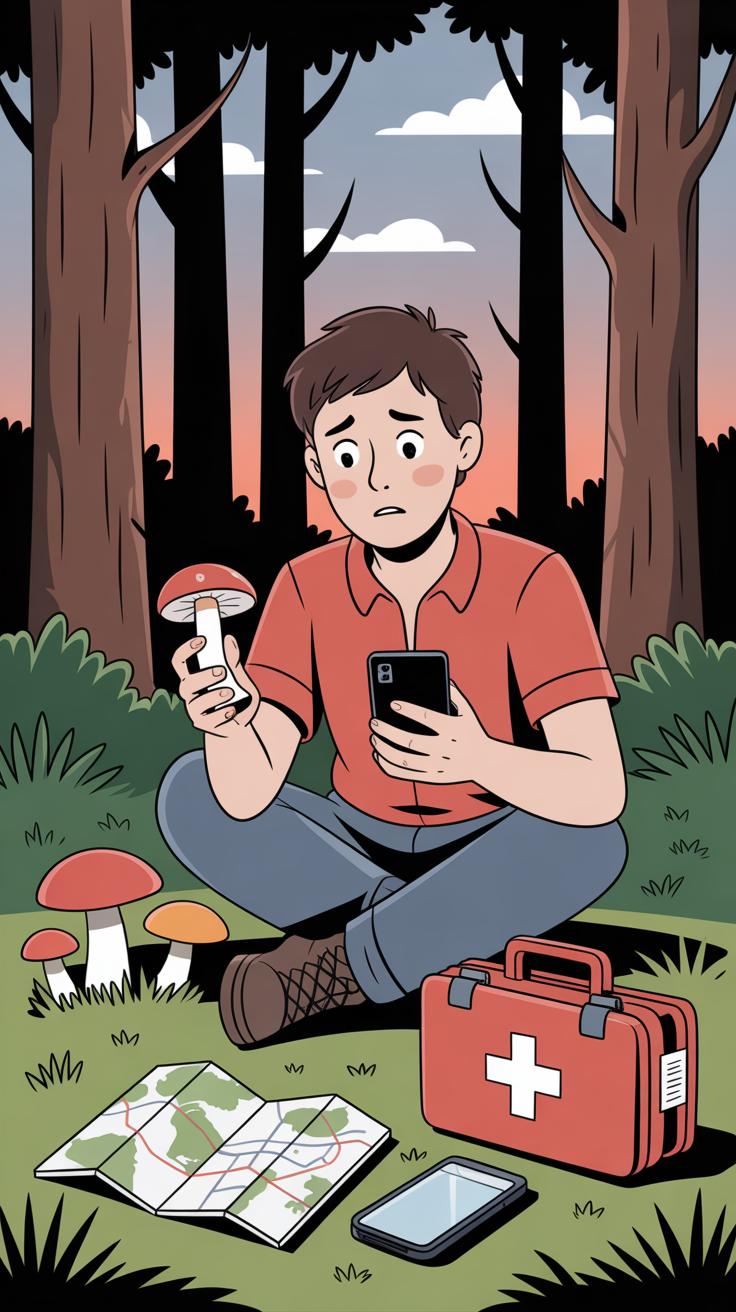
Recognizing Symptoms Early
If you’ve eaten a green cap mushroom and start feeling unwell, it’s crucial to spot symptoms quickly. Toxic green caps can cause a range of reactions, sometimes subtle at first. Watch out for nausea, vomiting, and stomach cramps—that’s often where it begins.
Diarrhea and dizziness may follow, along with headaches or sweating. Some people notice blurred vision, confusion, or unusual weakness. Symptoms might take a few hours to show up, but sometimes they appear sooner. It’s tricky because sometimes mild symptoms seem like just a stomach bug or food upset, but the cause could be more serious.
There’s also a risk of more severe issues like liver problems or trouble breathing, but those usually come later. If you experience any rapid changes in how you feel after eating mushrooms—especially green caps—don’t wait it out. Act fast, even if the symptoms seem mild at first.
Immediate Actions for Safety
As soon as you suspect mushroom poisoning, take these steps right away:
- Stop eating the mushroom immediately. Don’t try to test if it’s safe by eating more or drinking alcohol.
- If you can, save a sample of the mushroom for identification—that can help doctors figure out the right treatment.
- Rinse your mouth with water, but don’t force vomiting unless a professional advises it.
- Call emergency services or poison control to explain what happened—give them as much detail as you can.
- Stay hydrated, but sip water slowly. Dehydration from vomiting or diarrhea can be dangerous.
- Get to a hospital. Don’t wait to see if symptoms worsen. Early medical care can make a big difference, especially with toxic green caps that affect the liver.
I’ve heard stories where people hesitated, thinking they’d feel better on their own, and that delay made things worse. Phone the experts, even if you’re unsure. It’s better to be cautious. When it comes to green cap mushrooms, safety isn’t worth risking.
Cooking and Eating Edible Green Caps Safely
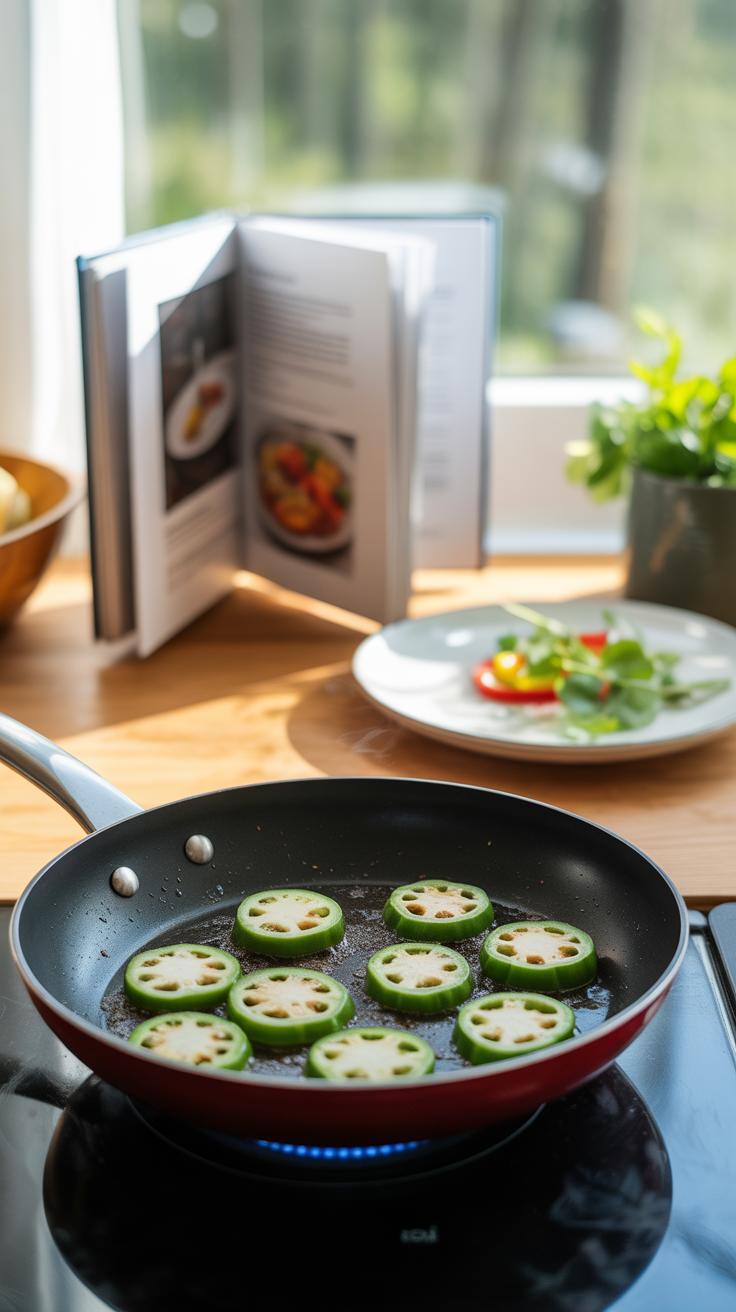
Cleaning and Preparation Tips
Green cap mushrooms often trap bits of dirt and forest debris in their gills and on their caps, so careful cleaning is key. I usually start by gently brushing off loose soil with a soft brush or a damp cloth. You want to avoid soaking them in water because mushrooms absorb moisture like sponges, which can affect their texture and flavor.
If they seem particularly dirty, a quick rinse under cold running water works, but do it briefly and pat dry immediately with paper towels. I’ve noticed that drying them this way helps prevent sogginess when cooking. Also, trimming any tough stems or unappealing parts before cooking makes a big difference in the final dish.
Taking your time with cleaning pays off. It’s better to be a bit meticulous here. Mushrooms can hold small insects, so a careful inspection is useful—sometimes I spot a tiny critter or two hiding beneath the cap.
Cooking Methods That Preserve Safety
Cooking green cap mushrooms fully is essential. Raw green caps, even the edible ones, might cause mild stomach discomfort for some people. Sautéing them over medium heat until tender is one of the best approaches. I think cooking them until they release their moisture and then turn a little golden not only ensures safety but also brings out their natural flavors.
Steaming or roasting works well, too, but keep an eye on cooking times. Undercooked mushrooms can sometimes be a bit tougher or less digestible. You might want to avoid boiling them directly in water, as that tends to wash away flavor and texture.
Stir-fries allow quick cooking with high heat, which seals their taste and texture nicely. When in doubt, err on the side of cooking a bit longer rather than less. Better safe and tasty than rushed and risky, right?
What goes well with green caps? I find simple pairings—like garlic, olive oil, and fresh herbs—highlight their subtle earthiness without overpowering them. Experiment, but always cook thoroughly before you enjoy.
Learning More About Green Cap Mushrooms
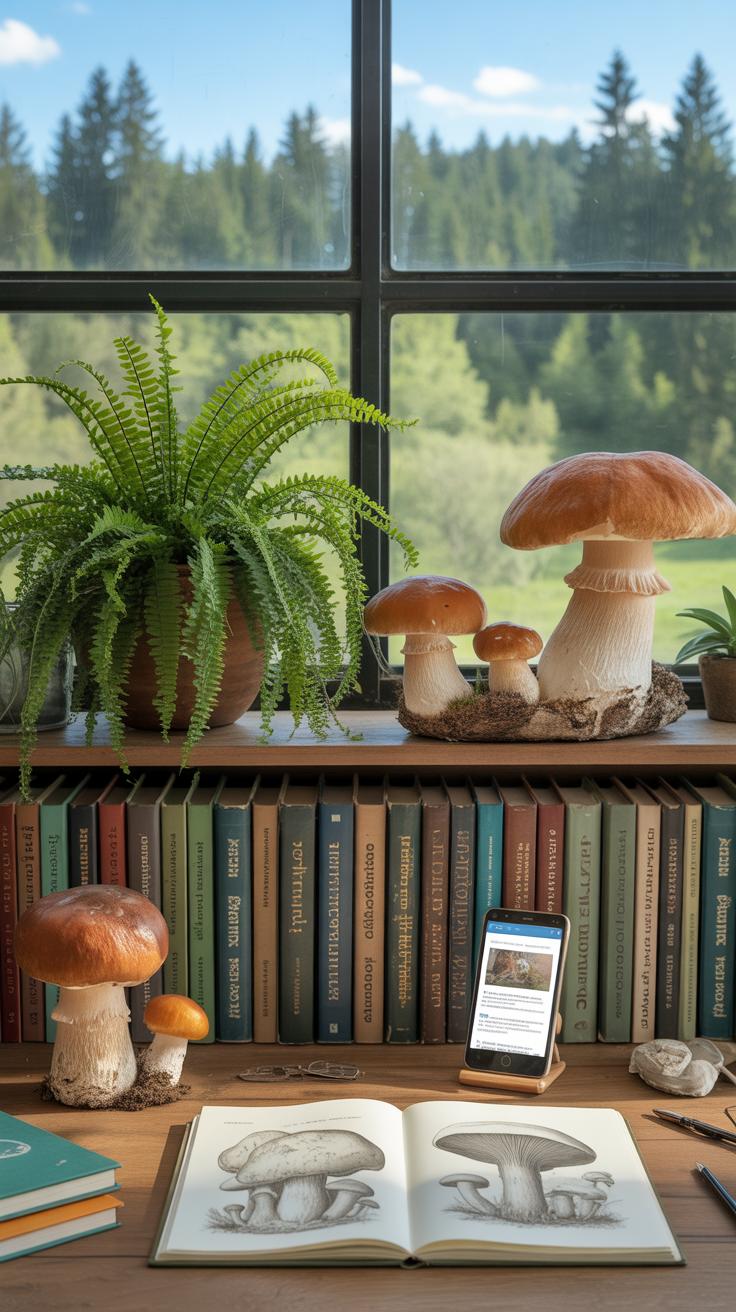
When it comes to green cap mushrooms, the learning never really stops. You might think you’ve got a handle on the basics, but there’s always more—whether it’s new identification tips or updates on toxic lookalikes. If you’re serious about foraging safely, it pays to keep feeding your curiosity with reliable information.
Books like “Mushrooms Demystified” by David Arora or “National Audubon Society Field Guide to North American Mushrooms” offer detailed insights and photos that help untangle confusing green cap varieties. Online resources, such as MushroomExpert.com or local mycology websites, provide updated identification keys and discussion forums where people share recent finds and warnings. These aren’t quick reads, but they reward persistence.
Joining a local foraging or mycology group can also be a game-changer. Meeting others lets you see real specimens firsthand and get second opinions—which can build your confidence and reduce the chance of mistakes. Plus, sharing stories about near-misses or lessons learned makes the whole process more real and less intimidating. These groups often organize guided walks where you can see different green cap mushrooms in natural settings, sometimes spotting variations not covered in books.
So, keep pushing your knowledge, ask questions, and don’t rely on a single source. Mushroom identification can be tricky, and green caps are especially so. It’s fine to feel a bit overwhelmed at times—as long as you keep learning and stay cautious.
Conclusions
Green cap mushrooms can be tasty or toxic. Learning to identify important features like cap color, gill structure, and habitat helps you make safe choices. Use your knowledge to spot edible types and avoid dangerous ones like the death cap.
Always be cautious when foraging for wild mushrooms. Never eat a mushroom unless you are certain it is safe. When in doubt, consult experts or local guides. Your safety is worth the effort to identify mushrooms correctly.


